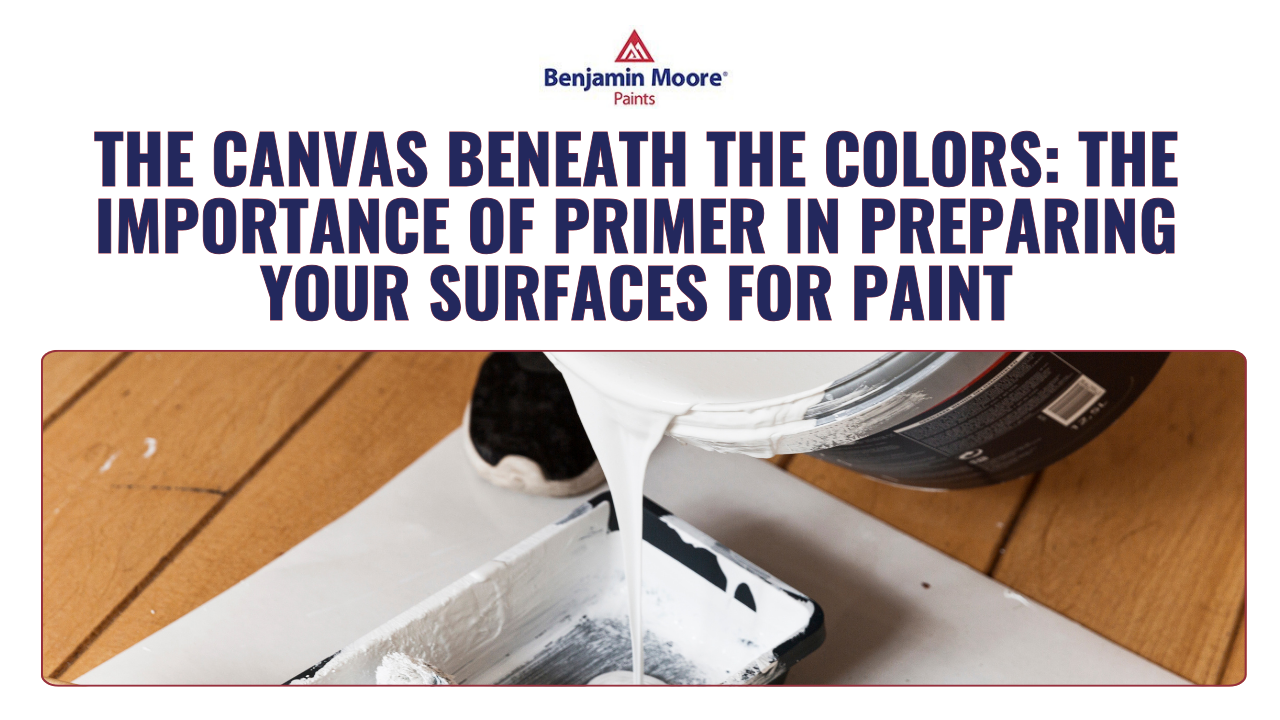
Imagine an artist preparing their canvas before creating a masterpiece. The surface is smooth, free of imperfections, and ready to absorb every stroke of color. In the world of painting, your surfaces are your canvas, and the primer is your preparatory masterpiece. In this blog, we’ll explore the vital role of primer and why it’s the unsung hero of the painting process.
What is Primer, Anyway?
Primer is a bonding agent and base coat that serves as the bridge between your surface and the paint. It’s formulated to ensure adhesion, seal porous surfaces, and create an even foundation for your chosen color. Primer acts as the protector and enhancer of your final paint job.
Adhesion and Durability:
One of the key roles of primer is to enhance the adhesion of the paint to the surface. It creates a strong bond, reducing the risk of paint peeling, cracking, or flaking. Think of it as the glue that holds your artwork to the canvas.
Sealant and Stain Blocker:
Primer acts as a sealant for porous surfaces, such as bare wood, drywall, or plaster. It prevents the absorption of paint and, in turn, reduces the amount of paint needed for full coverage. Additionally, primer can block stains, ensuring that discolorations and imperfections don’t bleed through your final paint job.
Enhanced Color and Coverage:
The use of primer can significantly enhance the vibrancy and consistency of your paint color. It provides a uniform surface, ensuring that the true color of your paint shines through without being affected by the color of the surface beneath.
Smoother Finish:
For those aiming for a smooth and flawless finish, primer is your best friend. It fills in small imperfections, such as minor dents or cracks, resulting in a surface that’s as smooth as silk and ready for your artistic touch.
Time and Cost Efficiency:
While it may seem like an additional step, using primer can save you time and money in the long run. It reduces the number of paint coats required for full coverage and prolongs the life of your paint job, reducing the need for frequent touch-ups.
Versatility:
Primer isn’t just for walls. It can be used on various surfaces, including wood, metal, and even plastic. It’s a versatile tool for any painting project, from interior walls to furniture and outdoor surfaces.
Types of Primer:
There are different types of primer tailored to specific needs. For example, there are primers designed for exterior use, stain-blocking primers, and even tinted primers that help improve the coverage of certain colors.
Conclusion:
Just as a canvas requires preparation before an artist’s brush touches it, your surfaces need the care and attention that only primer can provide. It’s the unsung hero of any painting project, ensuring the longevity and quality of your final artwork. So, the next time you embark on a painting adventure, remember that the true artistry begins with the primer, setting the stage for your colors to shine. Treat your surfaces to this preparatory masterpiece, and watch your paint job transform into a work of art that stands the test of time.
